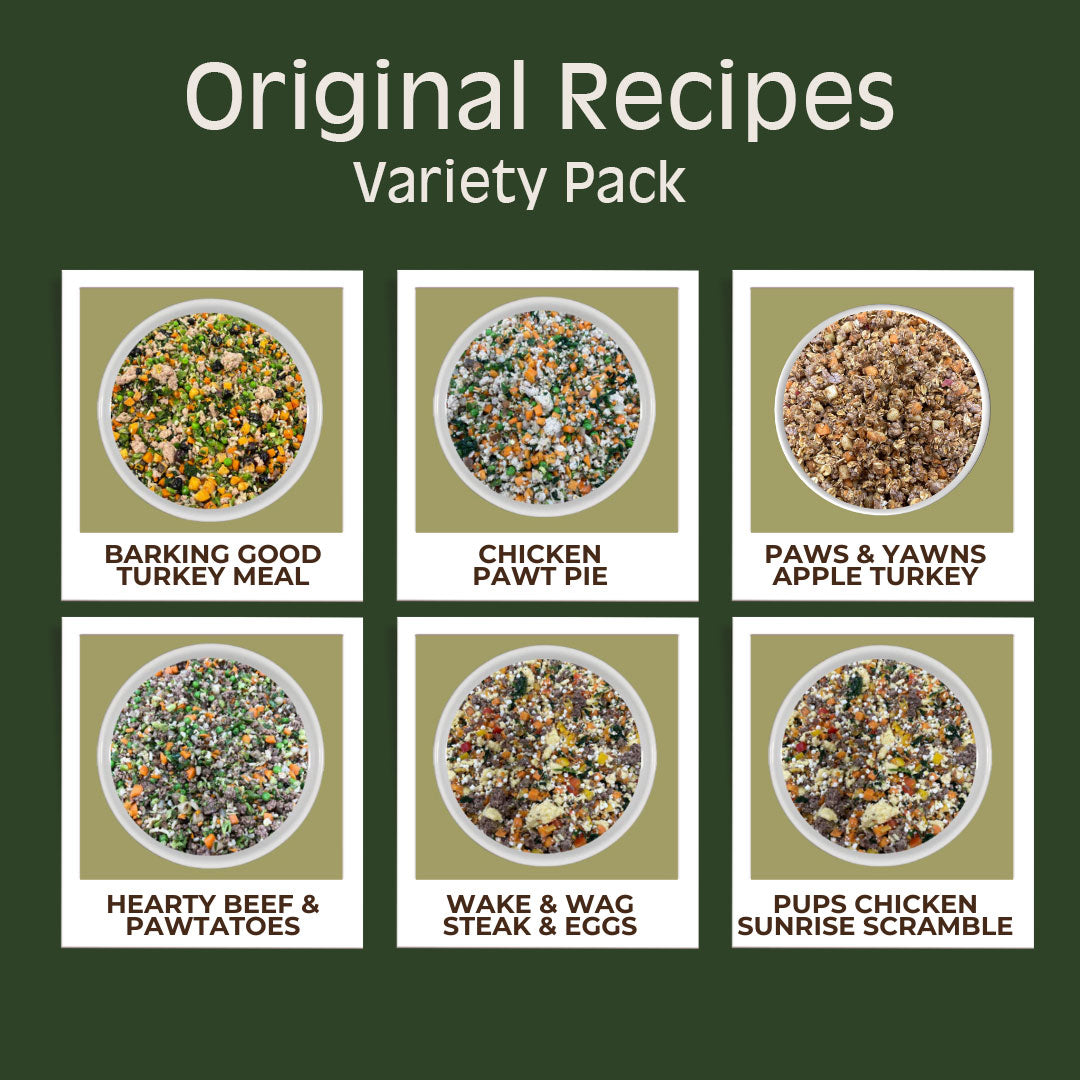
Understanding Protein Energetics in Dog Food: Hot, Warm, Cool & Neutral Proteins Explained
Marc FussellShare
At Pup Kitchen, we know that every dog is different—and their food should reflect that. Choosing the right type of protein can help support your dog’s overall wellness, especially if they deal with things like seasonal allergies, stiffness, or anxious behavior. One useful approach for understanding these differences is called food energetics, which looks at how certain proteins can have warming or cooling effects on the body.
In this post, we’ll explore how different proteins—hot, warm, cool, and neutral—can help your dog stay balanced and feeling their best.
Why Gentle Cooking Matters for Your Pup
At Pup Kitchen, we gently cook every ingredient—not just to meet human-grade standards—but to support better digestion for your pup. While some people feed raw vegetables to dogs, we’ve seen firsthand that many vegetables are tough for dogs to break down when raw.
Unlike humans, dogs don’t chew thoroughly. Instead, they gulp food in larger chunks and rely more heavily on their digestive systems to do the work. That’s why ingredients like raw carrots, sweet potatoes, and potatoes can often pass through undigested—sometimes showing up nearly whole in stool.
Our cooking process is designed to soften these ingredients just enough to improve digestibility without compromising nutritional value. By gently cooking vegetables and proteins, we help ensure your dog can actually absorb the nutrients you’re feeding them—making every bowl more effective, and more delicious.
Is Your Dog "Hot," "Warm," "Cold," or "Neutral"?
Before selecting a protein source, it’s helpful to consider your dog’s natural tendencies and preferences.
Hot Dogs
These pups are usually energetic, sometimes anxious, and often seek out cool places to rest (like tile floors). They may pant more than expected or drink a lot of water. Common challenges for hot dogs include itching, dry skin, and signs of inflammation.
Warm Dogs
Warm dogs may have some signs of internal heat but aren't as extreme as hot dogs. They might be lightly restless or show mild skin or digestion issues. These dogs tend to do well in moderate environments but may need help staying cool during warmer months.
- Common signs: Mild irritation, restlessness, seasonal itchiness
- Supportive tip: Add cooling proteins during spring and summer for balance
Cold Dogs
Cold dogs prefer warmth. They may move more slowly, love cuddling under blankets, or stretch out in sunny spots. You might notice stiffness after naps or less enthusiasm around mealtime.
Neutral Dogs
Neutral dogs tend to stay balanced and don’t show strong hot or cold traits. They might have occasional imbalances, especially with weather changes or stress, but generally bounce back easily.
How Proteins Influence Your Dog’s Balance
In food energetics, proteins are grouped by how they influence the body’s internal temperature and energy. Matching the protein type to your dog’s needs can help support comfort, digestion, and behavior.
Hot Proteins
These proteins create heat in the body. They’re best used in moderation, especially for dogs that already run warm.
- Examples: Beef, venison, trout, lamb
- Best for: Cold dogs in cooler weather
-
Caution: May contribute to heat-related symptoms in hot dogs
- Pup Kitchen Pick: Gently cooked with digestible veggies, ideal for pups who prefer warmth or need extra vitality
Warm Proteins
Gentle warming proteins are great for chilly seasons or dogs that enjoy extra warmth.
- Examples: Chicken, turkey
- Best for: Cold or warm dogs in fall and winter
- Pup Kitchen Pick: A lightly warming, satisfying option for cooler months
Cool Proteins
Cooling proteins are great for calming excess heat and supporting seasonal comfort, especially in spring and summer.
- Examples: Rabbit, duck, pork, cod
- Best for: Hot or warm dogs prone to itching, hyperactivity, or discomfort
Neutral Proteins
Balanced and easygoing, neutral proteins are great for most dogs and ideal for creating variety in the diet.
- Examples: Salmon, beef, pork, mackerel
- Best for: Neutral dogs or general rotation
- Pup Kitchen Pick: Crafted with balance in mind, using veggies to help mellow its warming effect
Why Fresh, Gently Cooked Food Matters
Many pet owners find their dogs thrive on a gently cooked diet made with high-quality ingredients. That’s because lightly cooked meals retain more nutrients and avoid the harsh processing that can come with traditional kibble. At Pup Kitchen, every recipe is prepared and packaged right here in Edwardsville, IL using whole ingredients you can trust.
Whether your dog needs help staying cool in the summer or moving better in the winter, a thoughtful protein choice—and fresh food—can make a noticeable difference in how they feel.

